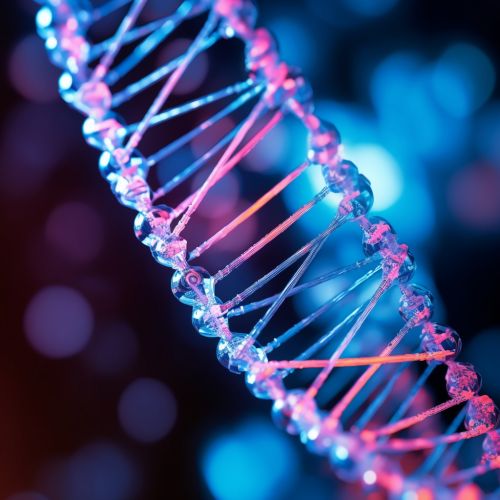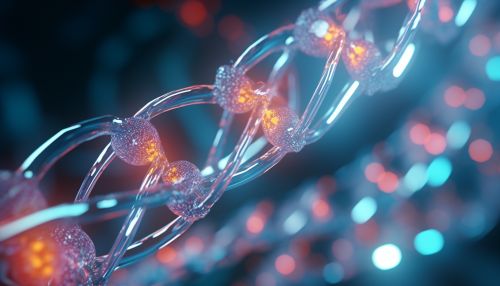Genetic Code
Overview
The genetic code is the set of rules by which information encoded in genetic material (DNA or RNA sequences) is translated into proteins (amino acid sequences) by living cells. The code defines how sequences of these nucleotide triplets, called codons, specify which amino acid will be added next during protein synthesis.
Characteristics of the Genetic Code
The genetic code has several characteristics. It is universal, unambiguous, degenerate, commaless, non-overlapping, and ordered. These characteristics have been crucial in the evolution and survival of species.
Universality
The genetic code is nearly universal, with very few exceptions. This implies that all organisms use the same genetic language. This universality of the genetic code strongly supports the theory of common descent, suggesting that all organisms on Earth have a common ancestor.
Unambiguous
Each codon codes for just one amino acid (or start or stop signal), making the genetic code unambiguous. This means that the genetic code is specific; each codon specifies only one particular amino acid.
Degeneracy
The genetic code is degenerate, meaning that an amino acid may be coded for by more than one codon. This degeneracy is believed to be a mechanism that allows evolution to occur while minimizing the effects of mutations.
Commaless and Non-overlapping
The genetic code is read in a continuous, "commaless" manner and is non-overlapping. This means that the same nucleotide cannot be used in more than one codon, which ensures precision in protein synthesis.
Ordered
The genetic code is ordered, which means that the codons for chemically similar amino acids often share the same first two bases. This provides a certain level of protection against mutations, as a single change in the third base of a codon often results in the coding of a chemically similar amino acid.
Deciphering the Genetic Code
The genetic code was deciphered in the 1960s through a series of experiments conducted by Marshall Nirenberg, Har Gobind Khorana, and their colleagues. The process of deciphering the code involved the use of synthetic RNA molecules to direct the synthesis of specific proteins in a cell-free system.
Codons
A codon is a sequence of three DNA or RNA nucleotides that corresponds with a specific amino acid or stop signal during protein synthesis. There are 64 possible codons, three of which are stop codons, and one is a start codon.
Start Codon
The start codon is the first codon of a messenger RNA (mRNA) transcript that is translated by a ribosome. In eukaryotes and Archaea, the start codon always codes for methionine in the nascent polypeptide chain.
Stop Codons
Stop codons are sequences of DNA and RNA that signal the end of protein synthesis. These are important in ensuring the protein is made to the correct length.
Genetic Code and Disease
Mutations in the genetic code can lead to diseases. These mutations can be small scale (affecting a small gene or group of genes) or large scale (affecting a whole chromosome or large group of chromosomes).
See Also


